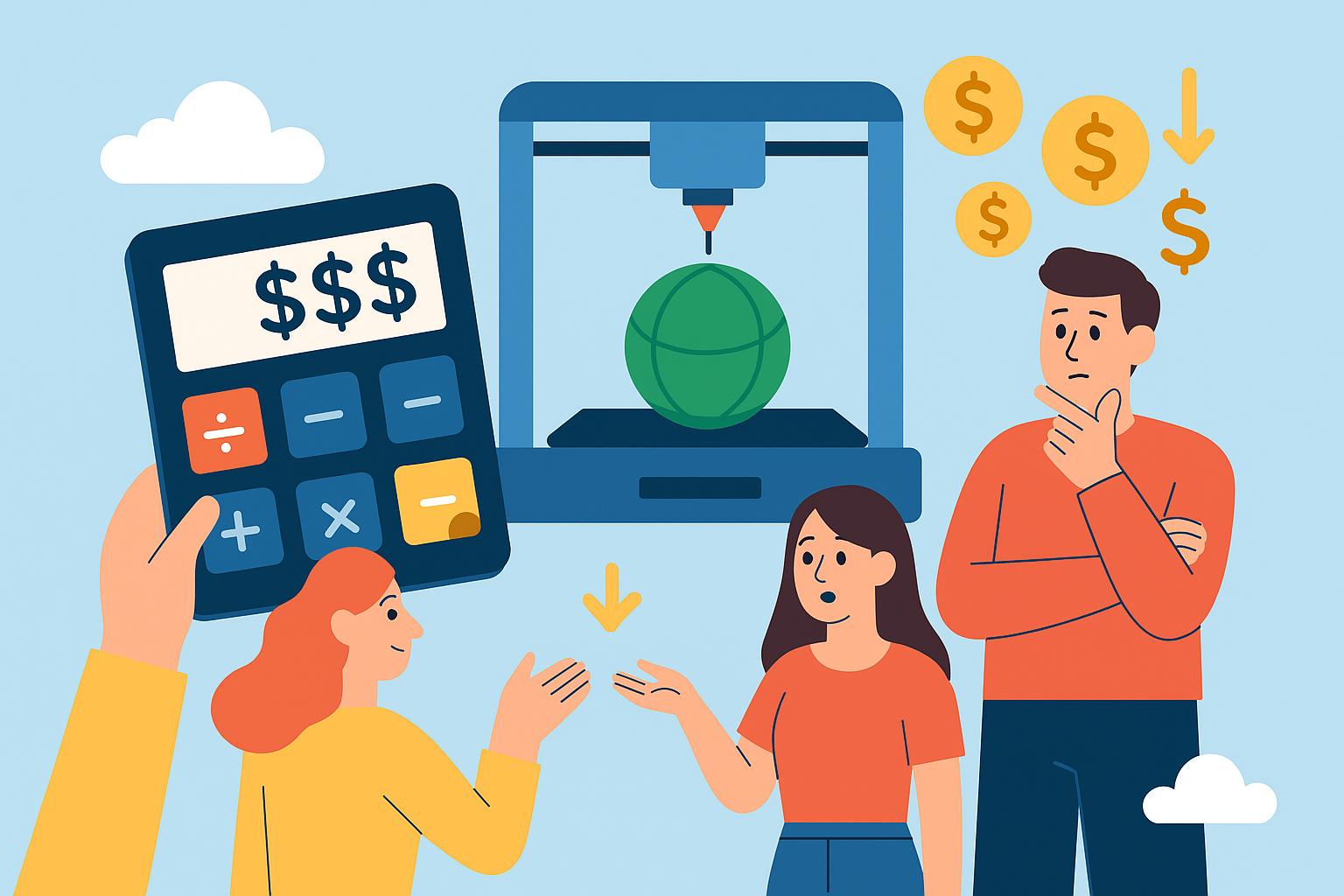The cost of 3D printing isn’t just about material weight. A fair quote includes far more than filament — and that’s where professional service differs from DIY or hobby printing. In this article, we’ll break down what goes into the pricing and how to keep your costs efficient without compromising quality.
What affects the price of 3D printing?
A professional print quote typically includes:
- Material – type, amount, waste from supports
- Print time – a 1-hour print is not the same as an 8-hour one
- Model preparation – checking, fixing, orientation
- Machine costs – depreciation, power, maintenance
- Expertise – to make sure it works right the first time
We may not be the cheapest — but our parts work as intended, on the first try. That’s real value.
What can raise the cost?
- Large dimensions or multiple parts
- Complex geometry (requiring supports)
- Unprepared or broken model files
- Demand for a special material
But often, we can suggest a more cost-effective solution with the same functionality.
How to save on 3D printing?
There are smart ways to reduce cost:
- Optimize the design – add cavities, reduce height, avoid supports
- Combine parts into one print job
- Use standard materials unless special ones are needed
- Submit a final-ready model that doesn’t need edits
We’ll gladly help you plan before you even start modeling.
Pro tip: use our online calculator
Check out our online calculator to estimate the price based on weight, print time, and material. You can even upload multiple files at once.
Conclusion
There are many factors that influence the cost of a 3D print. If you want a part that works — not just prints — look beyond the price tag. We print efficiently, but above all: we print properly.
Get a quote or message us — we’ll walk you through the process.

